Without cardboard boxes, the age of Amazon may never have happened.
Forget shoe boxes, Chinese takeout boxes, and pizza boxes: the most popular (and iconic!) box in the world is the cardboard shipping box. Children make forts out of them. Adults use them for storage. E-commerce giants like Amazon have deployed them to keep up with the growing demand of online shoppers.
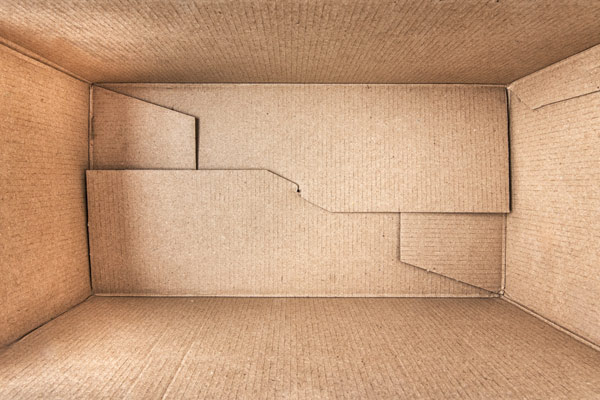
This simple cardboard packaging, used in approximately 90% of retail shipments, has become the gold standard for the safe delivery of e-commerce wares. The shipping box is light, yet sturdy enough to protect its contents throughout the sometimes tumultuous shipping process, and its affordability makes it accessible to businesses of all sizes.
But how did this popular box come to be? And what variations on the classic cardboard box are available to small business owners? Let’s unpack the history and myriad uses of this popular mainstay.
A Brief History of Cardboard
While cardboard boxes are now used to protect your Amazon Prime orders, their history goes back further than you might think — all the way to the invention of paper in ancient China. Cai Lun of the Eastern Han Dynasty developed a pulping process that still informs how we make cardboard today, mixing fragments of tree bark, hemp, cloth, and plant fibers with water. Through trade, papermaking spread to Japan in the east and the Islamic world in the west, before eventually making its way to Europe.
Fast forward to the early 1800s, when a plain paperboard box, similar to today’s breakfast cereal boxes, emerged in England. In 1856, Englishmen Edward Allen and Edward Healey developed corrugated paper to line men’s hats, giving them stability and warmth. Later, in 1871 in the United States, Albert Jones used Allen and Healey’s corrugated paper to create a type of cardboard that he found worked well to protect glassware during shipping. And, in 1874, Oliver Long improved on Jones’s design by putting liner sheets on both sides of corrugated board, creating the closest model yet to the modern cardboard box.
However, the cardboard box wasn’t done evolving. In 1879, German chemist Carl F. Dahl created the Kraft process to produce a new type of paper closer in composition to the cardboard box of today. This paper was high in elasticity but resistant to tearing, and similar to Cai Lun’s method, was created by pulping wood chips, which lent it the iconic brown color we recognize from school lunch bags and shipping boxes.
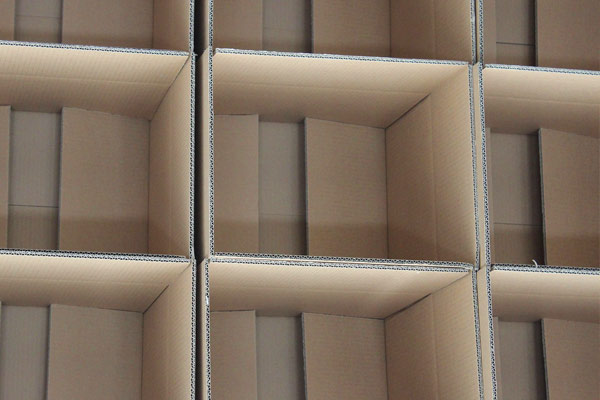
Finally, in 1895, the first modern cardboard box was manufactured in the United States. This box, made from corrugated cardboard (a new innovation at the time) and Kraft paper manufactured using Dahl’s method, served as a simple, durable solution to the commercial shipping needs that emerged during the Industrial Revolution. Compared to wooden pallets and crates, these corrugated cardboard boxes were light and cheap to produce.
During World War II, cardboard boxes served a variety of essential purposes. In 1939, fear of gas attacks by Germany prompted the British government to issue protective masks to every citizen of London, which were delivered in cardboard boxes. At the end of WWII, CARE food packages were sent to citizens of war-torn regions. These cardboard boxes contained meat, powdered eggs, margarine, and other essentials to help communities get back on their feet.
Driving the Ecommerce Revolution
Decades later, the cardboard box continues to shape the way we store goods, protect shipments, and do business.
Most notably, shipping boxes have been integral to the online shopping boom. In 2016, e-commerce sales in the United States amounted to $322 billion, and that number is expected to continue growing. From small business owners selling products on Etsy to e-commerce giants like Amazon, your reputation as a business depends on how reliably you can deliver your products to customers. Shipping boxes make that dependability possible!
Shipping Boxes
The ideal shipping box is economical and durable. First and foremost, it needs to protect the product during the (sometimes turbulent) shipping and handling processes. Using Kraft paper as the base material and corrugated construction for added durability, modern shipping boxes are the ideal vessel for e-commerce sales.
Here are a few of the options available to you for your shipping needs:
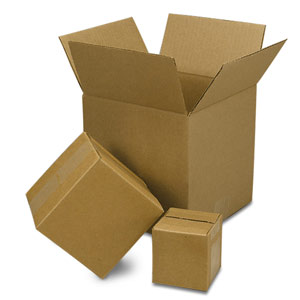 Standard RSC Corrugated Boxes
Standard RSC Corrugated Boxes
The most common shipping box, RSC stands for “Regular Slotted Container.” With flaps that meet in the middle for easy sealing, RSCs have corrugated sidewalls for additional strength. Some boxes are double-corrugated with a second fluted layer for heavy duty durability.
Tuck Top Corrugated Mailing Boxes
The tuck top box is an industry favorite for its easy-closing lids, which feature a flap that extends forward to allow the box to seal itself. Tab lock boxes are also available for added security.
Mailing Tubes
For shipping unwieldy artwork, mailing tubes are a great option. Spiral chipboard forms the structure of the tube, providing dependable protection for posters and prints.
Die-Cut Boxes
It’s possible to tailor the dimensions of a shipping box to the size of the product being shipped. With die-cut boxes, customized folding patterns can accommodate products of varying size and number.
Colored Boxes
If you’d like, you can add color to your shipping boxes for a personal touch. Colored mailing boxes are a fun way to make delivery unique and memorable.
A Box For Every Need
The cardboard box is the workhorse of our postal system, but by no means is it your only option! If you’re looking to branch out, here are a few other packaging solutions to try:
 Food Box
Food Box
For restaurant or bakery owners, food shipping boxes are perfect. Macarons and cupcakes can be packaged in these unique boxes that are sturdy and Instagram-friendly.
Baking Box
Perfect for cakes and pastries, baking boxes help preserve the taste of food during shipment.
Candy Box
To package their sweets, candy makers and chocolatiers should consider boxes made for this express purpose. They protect the product and look great doing it.
Moving Box
For packing personal items, moving boxes allow you to easily store clothes, books, and household goods. They come in a variety of dimensions so you can arrange them with Tetris-like precision during transport.
Storage and Organization
These handy bin boxes are corrugated for strength and can be used to easily organize craft supplies and loose items.
Packaging for Parties and Weddings
Ideal for trinkets or candy, party, and wedding favor boxes are a wonderful way to thank everyone for making your special day so memorable.
Wine Box
Special occasions call for the best wine. Make sure your bottle of red, white, or bubbly looks the part in an elegant wine box.
Tuck Top Gift Box
Tuck top gift boxes seal themselves, and that makes them great for wrapping hats, mugs, and other uniquely shaped items in transit.
 Jewel Box
Jewel Box
If you’re looking to store jewelry, silverware, or family keepsakes, jewel boxes are small, secure, and specially designed to protect your valuables.
Tent Box
Perfect for boutiques or high-end retail stores, tent boxes are chic and appealing. They’re made of high-quality cardstock and come in a variety of printed patterns.
How to Ship a Box
To ensure that your products are delivered to customers on time and in mint condition, here are a few tips to keep in mind when you’re getting ready to ship.
The Right Box
Choose a shipping box that’s large enough to fit everything, yet snug enough that the items inside don’t shift too much. Choose a box with single- or double-corrugated walls, depending on the weight of the package and how far it has to travel.
Measurements
Check out UPS’s helpful guide to determine the precise measurements of your package.
Pack
Leaving a bit of extra space in your package cuts down on weight and cost, but movement inside the box may cause whatever you’re shipping to get damaged during transport. Use lightweight cushioning products like bubble wrap, shipping paper, and peanut fills to keep the contents of your package safe and stable.
Seal
If you don’t seal your box correctly, the items inside may get damaged or fall out entirely. Double check your tape — and for heavier duty seals, consider using straps.
Label
Apply your label so that it lies flat, is easy to see, and is placed away from seams and corners.
As online shopping continues to dominate the retail sphere, the demand for durable and affordable shipping and storage boxes will only increase. Consider Paper Mart’s vast selection of packaging options to ensure that every delivery arrives at its final destination safe and sound.
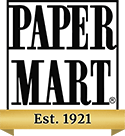
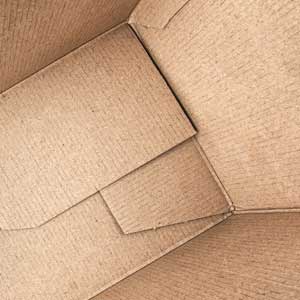
thank you
Nice information you share on this blog. Moving is not easy work it’s very stressful work. Thanks a lot for this beauty Enjoying article with me. I appreciate it very much!
The information on this blog was really helpful for me and hopefully, it also helped other people as well.
The way of your writing style is outstanding and very easy to understand. Thank you to sharing such a informative post.
Thank you very much for all the information you put in your sales article for cardboard boxes all your information has been very helpful.
Keep up the great work. Thank you for this very interesting information.
Cardboard boxes sure mean something throughout our history! They have served and still serve us in many different forms. It is truly the next big thing after the wheel I’ll say!
Thanks for posting this great article.It help me to know all history of cardboard boxes.
Your article about history of cardboard boxes is very informative.
Thanks for posting this.Your blog help me to know about the history of cardboard boxes.
Very helpful post. Thanks for sharing such a piece of information.
thank you for teaching me how boxes work, i always got stuck in them
Actually, Cardboard boxes are really useful for moving the stuff. It’s very beneficial. Lot’s of people are using any ideas for moving stuff but use boxes for moving are very easy and safe moving. You share the right information on this blog. Thank you so much.
thanks for the information
Hey Emily, thanks for sharing this comprehensive information about cardboard boxes and their varied use. Truly informative!
Great information shared..
Thanks for sharing this information it’s very useful for me. these blogs is fabulous.
Great information shared..
If we want an efficient and economical packaging we should always choose a cardboard box.
The carton is the most widely used packaging in the world, in addition to protecting products with greater efficiency.
Your blog is very informative and interesting to read and you explain everything very well with images. I learn many things from here. Thanks for writing it.